Review: Dual-slot Zerotherm cooler and a sweet price tag
While ATI and Nvidia keep trading punches in the never ending battle for the high-end throne, we chose to take a look at the more sensible side of things and test another mainstream card. The HD 4850 is currently the best mid-range card that money can buy, and Club3D's overclocked version can be found for as low as €146, while the lowest priced reference HD 4850 card can be found for just under €130, so let's see if it's worth the additional €20 or so.
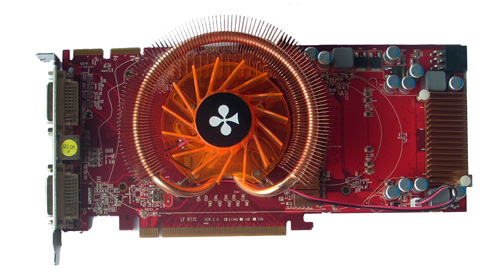
ATI's RV770 core packs an impressive 965 million transistors and we already said that both HD 4870 and HD 4850 cards feature the same GPU at different clocks. While the HD 4870 runs at 750MHz, the reference Radeon HD 4850 is clocked at 625MHz. As far as memory is concerned, HD 4800 has a 256-bit memory bus, but in order to stay in the big league and fight with Nvidia’s latest offerings, ATI opted for GDDR5 memory. The Club3D HD 4850 OC Edition is a bit different, as Club3D decided to go for the factory overclock, so this card works at 665MHz for the core and comes with 512MB of GDDR3 memory clocked at reference 993MHz (1,986MHz effective).
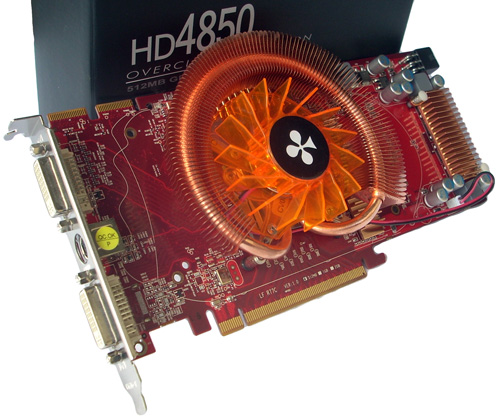
The new GPU is built in 55nm process and brings 800 shader processors on both Radeon HD 4800 cards. Compared to the previous HD 3800 generation it’s got 2.5 times more shader processors and the same goes for 40 texture units (HD 3800 features 16). This is an important step forward, because texture processor performance will no longer be a bottleneck. So far, we’ve had 16 texture processors grouped in 4 blocks, where each block had one filter unit at its disposal. RV770 features 40 texture processors grouped in 10 blocks, and each block has 4 filters at its disposal. Raster processors also went through a makeover. Just like RV670, RV770 has 16 ROP units but they are twice more effective in processing Z-buffers. RV770 can process 64 Z-values per clock cycle, and full screen antialiasing performance also improved.
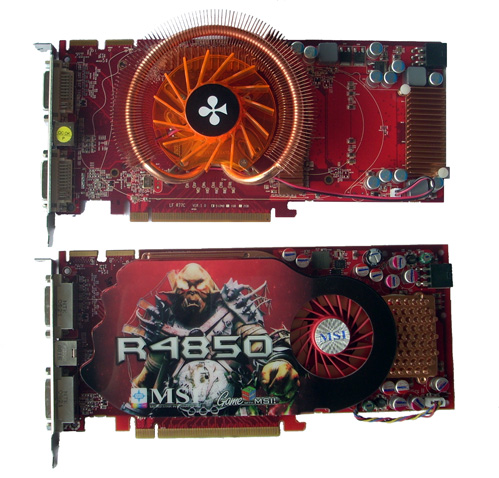
The Club3D HD 4850 OC Edition is a bit different from the reference designed HD 4850. In addition to the different cooler and higher GPU clock, there are also some minor changes to the PCB design, as well, the power connector is pushed a bit higher near the edge of the card, and unlike the reference card the VRM heatsink is separated from the main heatsink.
As for the power consumption, the HD 4850 is also different from its big brother, the HD 4870. The HD 4850 has a maximum consumption of 110W, whereas, for example HD 4870 will draw 160W. It’s important to note that this card is powered through a single 6-pin connector, unlike other high-end cards that require two of these.
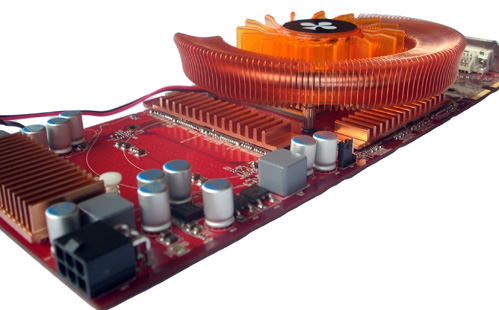
The cooler on the Club3D HD 4850 OC Edition is a dual-slot design from Zerotherm. It is the same cooler that Powercolor likes to use on its PCS series graphics cards, but it also isn't new to Club3D either, as they used it on some previous cards. The reference single-slot cooler gets quite hot, and the temperature can climb up to 87 degrees Celsius, which is a normal operation temperature for this card. The single-slot cooler does a good job at cooling the HD 4850 card, and it's not that loud, which led us to the conclusion that Zerotherm's cooler can only do better, and be more silent.
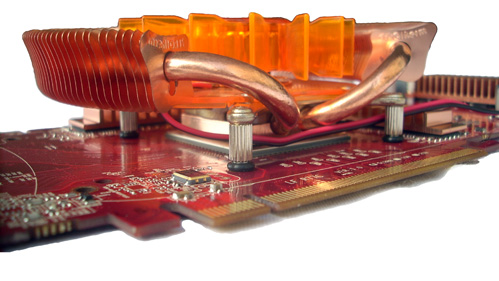
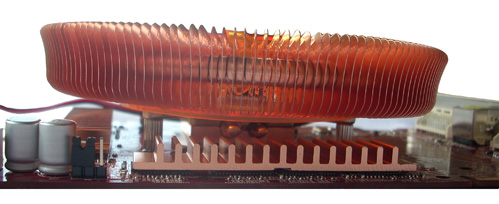
And as we hoped, the Zerotherm dual-slot cooler keeps the card nice and cool and it even does a great job when the card is overclocked. Both idle and load temperatures are much lower than on the reference card and the only drawback is that this time the card takes up two slots.


The card is packed in a rather modest black box with all the juicy details and features listed on the back. The card is tightly secured inside the box and the rest of the accessories are placed in a separate cardboard compartment.
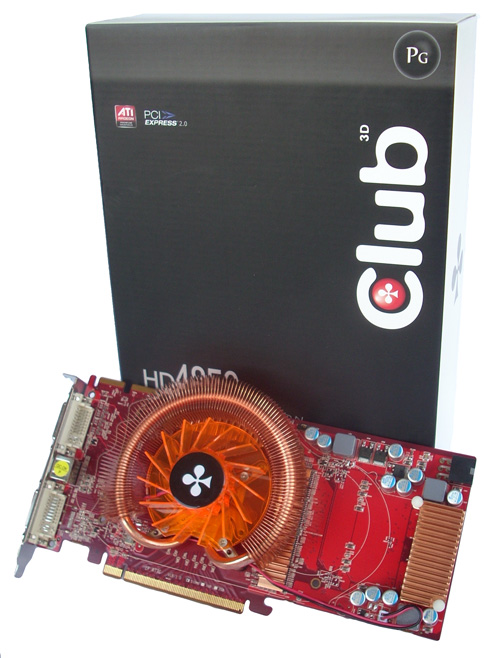
Club3D bundles all the necessary accessories with this card and includes, S-Video to Composite adapter, S-Video to RGB adapter, DVI to HDMI and DVI to D-Sub adapter, a Crossfire bridge, ATI Catalyst driver CD, and a user manual. The Zerotherm cooler is secured by a block of foam so it won't break or bend during shipping.
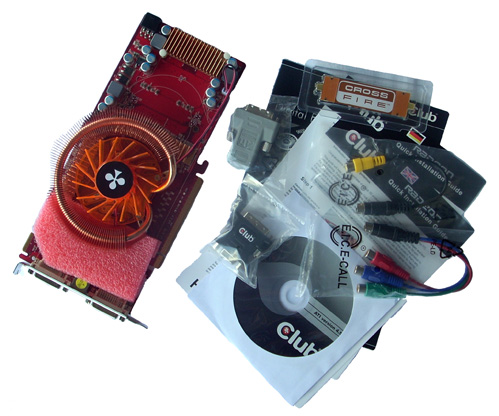
Testbed
Motherboard: DFI DK P45 T2RS (Courtesy of DFI)
Processor: Intel Core 2 Duo E8400 @ 3.0GHz
Memory: G.Skill PI Black G.SKILL DDR2 PC2 6400 CL4 4GB Kit (Courtesy of G.Skill)
Graphics card: Club3D HD 4850 OC Edition (Courtesy of Club3D)
MSI HD 4850 (Courtesy of MSI)
EVGA 9800GTX SSC (Courtesy of EVGA)
PSU: OCZ EvoStream 720W SLI (Courtesy of OCZ)
Hard drive: Seagate Barracuda 7200.9 80GB SATA (Courtesy of Seagate)
Benchmarks
Futuremark Tests
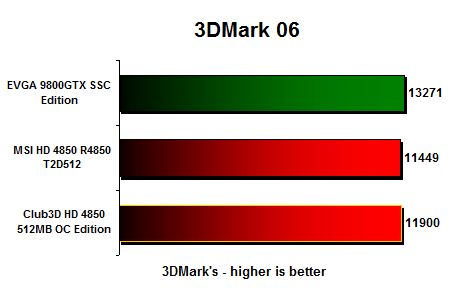
The higher GPU clock on the Club3D HD 4850 OC Edition gives this card a slight advantage in 3DMark 06.
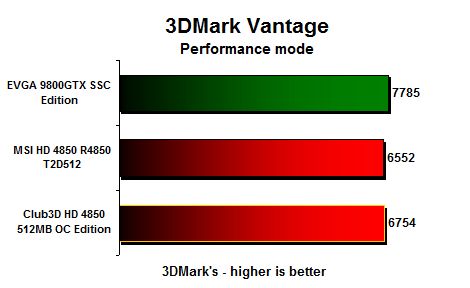
An additional 40MHz over the reference GPU clock gives this card a slight advantage over the reference HD 4850 in 3DMark Vantage. EVGA's 9800GTX moves away, as its higher GPU and memory clock is just way too much for HD 4850 to handle, but you must bear in mind that even now 9800GTX and 9800GTX+ are much more expensive than the HD 4850.
Games
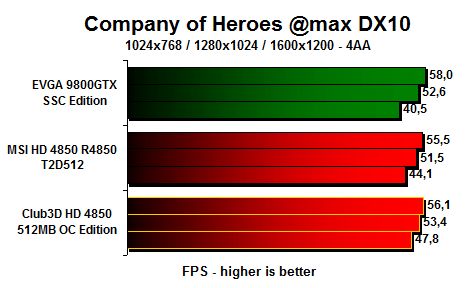
All three cards are almost the same in Company of Heroes, and the extra 40MHz can give you up to 1-2 FPS more.
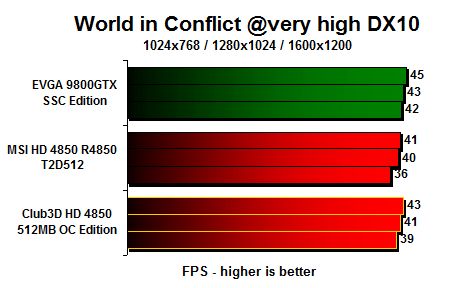
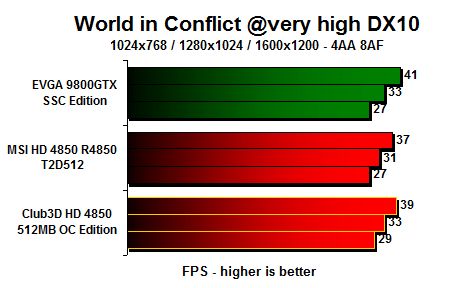
In World in Conflict the story repeats itself, as the Club3D HD 4850 OC Edition is 1 to 2 FPS faster than the reference HD 4850. It even manages to trail the 9800GTX and even have the higher FPS at high resolution.
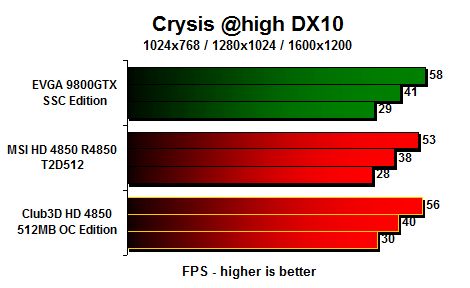
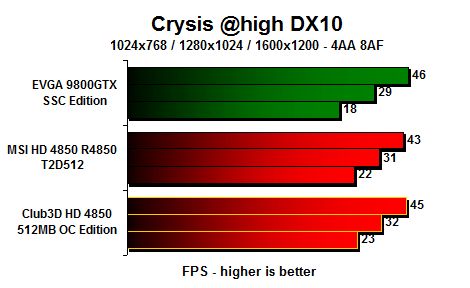
Crysis tells the same story once again, as this factory overclock is too low to make any impressive difference at FPS count but 1 to 2 FPS can sometimes mean a lot.
Overclocking
Despite the use of Zerotherm's cooler, we didn't manage to overclock this card to 700MHz for the GPU, and the highest stable overclock ended up at 680MHz, but even then the load temperature doesn't go over 65 degrees Celsius. The memory couldn't go much over its reference value, so we gave up, as it is cooled by a small heatsink that uses the air that fan creates but it isn't connected to the main heatsink.
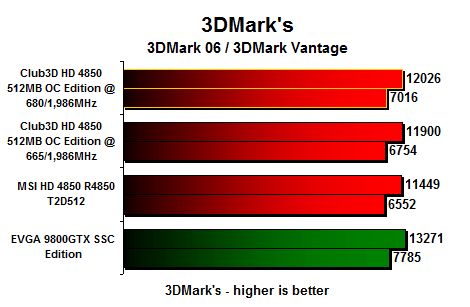
As you can see from these results, an additional 15MHz on the GPU clock raises up the 3DMark 06 and Vantage scores while the temperature peaks at 65 degrees Celsius under full load. This is a great win for Zerotherm, as it definitely does a great job with the RV770 GPU and let's not forget that it is less noisy than the reference cooler, even while the fan is pushed to 64 percent under full load.
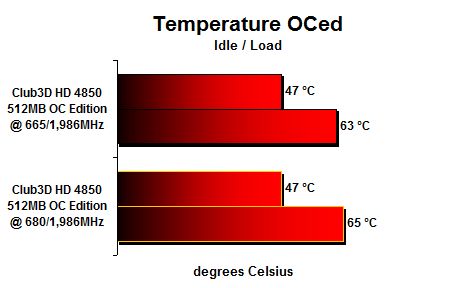
Conclusion
The factory overclock on the Club3D HD 4850 OC Edition card doesn't bring any impressive performance gains when compared to the reference card. The main question here is if this card is worth the additional €20 or so.
We think it is, as you get a better cooling solution which will keep the card at a much more reasonable 63 degrees Celsius under load. The performance is practically the same as with a reference HD 4850, which can probably also overclock to 680MHz, but with the temperature at 87 degrees Celsius it can influence lifetime and other components in the case.
The price is just right; as this card sells for €146 and thus we can only recommend it, as Club3D did a good job with Zerotherm cooling. If it's too pricey for you, and you're looking for a €100 card, you can go for the HD 4830 or the HD 4670; but at sub-€150 this card hits the sweet spot.
